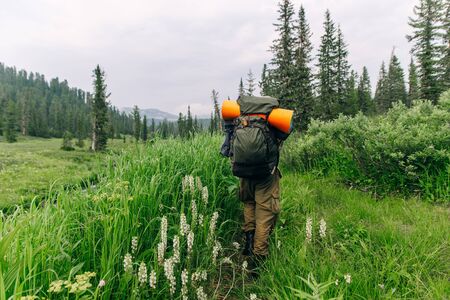Introduction to North Dakota Hiking
If you’re craving wide open skies, breathtaking rock formations, and the gentle sway of prairie grasses, hiking in North Dakota is calling your name. This state offers a unique blend of wild beauty and peaceful solitude, especially along its famous Badlands and sweeping grassland trails.
North Dakota’s hiking culture is all about embracing the outdoors at your own pace. You’ll find locals and visitors alike enjoying everything from short nature walks to multi-day adventures. There’s a strong sense of community on the trails, with friendly greetings and helpful tips exchanged between hikers. Whether you’re a solo explorer or planning a girls’ weekend getaway, you’ll feel right at home here.
Why Hike in North Dakota?
| Feature | What Makes It Special |
|---|---|
| The Badlands | Dramatic rock formations, colorful canyons, and winding trails. The landscape looks like another planet! |
| Prairie Grasslands | Endless fields dotted with wildflowers, bison sightings, and peaceful silence only broken by birdsong. |
| Quiet Trails | No crowds here—just plenty of space to breathe and recharge. |
| Wildlife Encounters | Bison, deer, prairie dogs, and more. Bring your camera! |
| Stargazing | North Dakota’s dark skies are perfect for spotting constellations after a day on the trail. |
The Unique Beauty of the Badlands
The Badlands in western North Dakota stand out with their rugged cliffs, layered rocks, and striking colors—ranging from deep reds to creamy yellows. Trails wind through Theodore Roosevelt National Park and surrounding areas, offering views you won’t find anywhere else in the country.
Sweeping Prairie Trails
If you love the idea of hiking under big blue skies, the state’s grassland trails are just as captivating. Here, you’ll walk among tall grasses and wildflowers that dance in the breeze. It’s not uncommon to spot herds of bison or wild horses grazing peacefully nearby.
A Friendly Hiking Community
North Dakotans take pride in their natural spaces and are always ready to share advice or directions. Many local hiking groups welcome newcomers for guided hikes—perfect if you’re looking to make new friends or need an extra confidence boost on the trail.
2. Understanding the Badlands and Grassland Terrain
Exploring North Dakota’s hiking trails is truly special because of the unique landscapes you’ll encounter. The Badlands and grasslands each offer their own adventure, with breathtaking views and distinct challenges. Here’s what you need to know about these amazing terrains before lacing up your boots.
Key Features of the North Dakota Badlands
| Feature | Description |
|---|---|
| Colorful Rock Formations | Layered buttes and rugged cliffs create a dramatic backdrop, especially at sunrise and sunset. |
| Canyons & Ravines | The landscape is full of winding canyons that make every hike feel like a new discovery. |
| Diverse Wildlife | Bison, wild horses, prairie dogs, and deer are commonly spotted along the trails. |
| Open Vistas | Sweeping views that stretch for miles—perfect for photos or just soaking in the scenery. |
Main Challenges on Badlands Trails
- Uneven Terrain: Expect steep climbs, loose rocks, and sudden drops. Sturdy footwear is a must!
- Lack of Shade: There are very few trees, so bring plenty of water and sun protection.
- Weather Swings: Conditions can shift quickly from hot sun to sudden storms—be prepared for anything.
- Navigational Difficulties: Some paths are not well-marked. A map or GPS app will help keep you on track.
Beauty of the Grassland Trails
The grasslands in North Dakota are just as captivating as the Badlands but have a softer, rolling charm. These open spaces seem endless, dotted with wildflowers in spring and summer. You’ll hear songbirds, see grazing antelope, and maybe spot a fox darting through tall grasses. The gentle hills make for easier walking, but don’t underestimate the wind—it can pick up fast on the open prairie!
Grassland Trail Highlights
- Wide-Open Skies: Ideal for stargazing or watching clouds drift by during your hike.
- Bursting Wildflowers: From late May through July, look for colorful blooms like coneflowers and prairie clover.
- Smooth Trails: Most grassland paths are less rocky than those in the Badlands, making them perfect for beginners or families.
Quick Comparison: Badlands vs. Grasslands
| Badlands | Grasslands | |
|---|---|---|
| Main Appeal | Dramatic geology & wildlife spotting | Peaceful open spaces & wildflowers |
| Terrain Type | Rugged, hilly, rocky | Smooth, rolling hills, grassy |
| Main Challenge | Navigation & exposure to elements | Wind & limited shade |
| Best For | Adventurous hikers seeking variety | Families and casual hikers wanting tranquility |
If you love hiking where every turn brings something new—whether it’s a panoramic view or a curious prairie dog—the North Dakota Badlands and grasslands won’t disappoint. Knowing what makes each terrain special helps you plan your adventure and pack smartly for a safe, enjoyable day outside.
![]()
3. Essential Gear for North Dakota Trails
Hiking the rugged Badlands and sweeping grasslands of North Dakota is a breathtaking adventure, but the right gear makes all the difference. Local trails can bring surprising weather, rough terrain, and plenty of sun exposure. Here’s what you’ll want to pack to stay comfortable, safe, and ready for anything on your North Dakota hike.
Must-Have Clothing
Layering is key in North Dakota’s changing climate. Mornings can be cool, afternoons warm, and weather conditions can shift quickly, especially in open grasslands or exposed Badlands areas.
| Clothing Item | Why You Need It |
|---|---|
| Moisture-wicking base layer | Keeps sweat off your skin, helps regulate temperature |
| Lightweight fleece or jacket | Adds warmth when temps drop unexpectedly |
| Quick-dry hiking pants/shorts | Protects legs from brush and dries fast after rain or stream crossings |
| Breathable long-sleeve shirt | Shields arms from sun and bugs |
| Wide-brimmed hat or cap | Essential for sun protection on open trails |
| Sunglasses with UV protection | Protects eyes from prairie glare and wind |
Footwear Fit for the Badlands & Grasslands
The right shoes matter! North Dakota trails range from dusty paths to rocky ridges.
- Sturdy hiking boots: Choose waterproof styles for muddy trails or creek crossings in spring.
- Cushioned trail runners: Great for well-maintained grassland paths and lighter packs.
- Wool or synthetic socks: Avoid cotton—these help prevent blisters and wick moisture.
Packs & Hydration
You’ll want a daypack that holds your essentials without weighing you down. Hydration is crucial—the dry prairie air can dehydrate you faster than you’d expect!
- Daypack (15–25L): Roomy enough for snacks, extra layers, first aid kit, and camera.
- Hydration system: A hydration bladder or water bottles (aim for at least 2 liters per person).
- Water filter or purification tablets: Useful for longer hikes where refilling from natural sources may be needed.
Sun Protection Musts
The wide-open spaces mean lots of sunshine, even on cloudy days. Don’t forget these sun safety basics:
- Broad-spectrum sunscreen (SPF 30+): Reapply every two hours—don’t skip ears or neck!
- Lip balm with SPF: Keeps lips protected from windburn and sunburn.
- Bandana or buff: Multi-use: wear around neck, over face in windy areas, or as a sweatband.
Packing Checklist for North Dakota Hikes
| Essentials |
|---|
| Moisture-wicking layers (top & bottom) |
| Sunscreen & lip balm with SPF |
| Sunglasses & hat/cap |
| Sturdy hiking boots/shoes & proper socks |
| Packed lunch/snacks & plenty of water (at least 2L) |
| Pocket first aid kit & blister care supplies |
| Poncho/rain jacket (just in case!) |
| Packed map/GPS device or smartphone with offline maps |
| Trekking poles (optional but helpful on rough terrain) |
| Bug spray (especially late spring through early fall) |
Treat Yourself Kindly!
No matter your experience level, being well-prepared lets you focus on enjoying the amazing scenery—and feeling confident out there. The right gear means less stress and more fun on every mile of North Dakota’s wild trails.
4. Safety Tips and Trail Etiquette
Stay Safe on North Dakota’s Trails
Hiking through North Dakota’s Badlands and rolling grasslands can be a truly magical experience, but safety should always come first. Whether you’re heading out for a quick stroll or a full-day adventure, following these essential guidelines will help keep you safe while respecting the land and others.
Crucial Safety Guidelines
| Safety Tip | Why It Matters |
|---|---|
| Plan Ahead | Check weather forecasts, trail conditions, and park alerts before you go. Sudden storms or high winds are common in the Badlands. |
| Pace Yourself | The terrain can be uneven and strenuous. Take breaks, stay hydrated, and listen to your body. |
| Tell Someone Your Plans | Share your hiking route and expected return time with a friend or family member, especially in remote areas with limited cell service. |
| Carry Essentials | Pack water, snacks, a first aid kit, sun protection, navigation tools (like a map or GPS), and layers for changing weather. |
| Stay on Marked Trails | This helps protect both you and fragile native plants from harm. |
Wildlife Awareness
The Badlands and grasslands are home to bison, deer, prairie dogs, rattlesnakes, and many bird species. Keep a respectful distance from all wildlife—use binoculars for a closer look instead of approaching animals. Never feed wild animals as it can harm them and disrupt their natural habits.
| Animal Encounter | What To Do |
|---|---|
| Bison or Large Mammals | Stay at least 100 yards away. Never try to pass between members of a herd. |
| Rattlesnakes | Watch where you step or place your hands. If you hear a rattle, slowly back away and give the snake plenty of space. |
| Prairie Dogs & Birds | Observe quietly from a distance; don’t disturb nests or burrows. |
Trail Etiquette: Respecting Others & the Environment
- Leave No Trace: Pack out all trash—including food scraps—and leave nature as you found it.
- Yield Right of Way: Uphill hikers have the right of way. Step aside for faster hikers or horseback riders.
- Keep Noise Down: Enjoy the quiet beauty—avoid loud music or shouting so everyone can enjoy the peaceful surroundings.
- If Hiking With Pets: Keep dogs leashed and pick up after them. Some parks may restrict pets in certain areas.
- Avoid Picking Wildflowers: Preserve local habitats by admiring plants without picking them.
- Follow Signage: Respect any trail closures or posted signs—they’re there for your safety and conservation efforts.
A Little Kindness Goes a Long Way
A friendly smile or hello is part of North Dakota’s charm! Be courteous to fellow hikers—you never know who might need advice, encouragement, or even just a cheerful greeting along the way.
5. Female-Friendly Hiking Advice
Empowering Tips for Women Exploring North Dakota Trails
North Dakota’s Badlands and grassland trails offer incredible adventures, and they’re perfect for women looking to hike solo or with friends. Here are some practical, supportive tips to help you feel confident and prepared on your next hiking trip.
Solo Hiking: Build Confidence and Enjoyment
- Start Small: Choose popular, well-marked trails like the Maah Daah Hey Trail or those in Theodore Roosevelt National Park for your first solo hikes.
- Share Your Plans: Always tell a friend or family member where you’re going and when you expect to be back.
- Use Navigation Tools: Download trail maps to your phone and carry a paper map just in case cell service drops out.
- Trust Your Instincts: If something doesn’t feel right—whether it’s the weather or the trail—don’t hesitate to turn around.
Personal Safety Must-Haves
| Essential Item | Why You Need It | Female-Friendly Tip |
|---|---|---|
| Whistle | To alert others if you need help | Clip to your backpack for easy access |
| Pepper Spray (where legal) | For peace of mind against wildlife or unwanted encounters | Carries easily in a side pocket; check local regulations first |
| Personal Locator Beacon (PLB) | Sends emergency signals if you’re out of cell range | Great for longer or remote hikes, especially solo trips |
| Comfortable Clothing & Layers | Northern plains weather can change quickly | Pocketed leggings or shorts are handy for storing small essentials |
| Hydration System | Staying hydrated is crucial on open grasslands and Badlands trails | A hydration pack keeps your hands free and water accessible |
| Sunscreen & Lip Balm with SPF | The prairie sun can be intense even on cooler days | Toss travel-size bottles into your bag for quick reapplication |
Connect with Supportive Communities
- Join Local Groups: Many areas have women’s hiking groups—check Meetup, Facebook, or REI events in Bismarck, Fargo, or Medora.
- Online Forums: Platforms like “Girls Who Hike North Dakota” are great places to find hiking buddies, swap tips, and get trail updates.
- Attend Workshops: Look for female-focused hiking clinics or safety workshops at state parks or local outdoor stores before hitting the Badlands or grasslands.
- Mental Wellness: Hiking can boost confidence and relieve stress—celebrate your achievements and share your experiences with other women hikers!
Your Adventure Awaits!
No matter your experience level, these tips are designed to help women feel empowered and safe while exploring the stunning trails of North Dakota. Happy hiking!
6. Seasonal Considerations and Trail Highlights
North Dakota’s hiking experience changes with every season, so it’s important to know what to expect before you hit the trails in the Badlands or the Northern grasslands. Each season offers its own beauty and challenges, from wildflower-filled spring meadows to golden autumn hills. Here’s a quick guide to help you plan your adventure:
What to Expect Each Season
| Season | Weather | Trail Conditions | What to Pack |
|---|---|---|---|
| Spring (April – June) | Mild temperatures, occasional rain, blooming wildflowers | Trails may be muddy; rivers and creeks can swell | Waterproof boots, layers, bug spray |
| Summer (July – August) | Hot days, cooler nights, occasional storms | Dry trails; watch for snakes and ticks | Sunscreen, hat, plenty of water, light clothing |
| Fall (September – October) | Crisp air, colorful foliage, less crowded | Firm trails; chilly mornings and evenings | Warm layers, camera for fall colors, snacks |
| Winter (November – March) | Cold temps, snow possible, very quiet | Snowy or icy trails; some closures | Thermal gear, traction devices, check trail status |
Must-See Trails in the Badlands and Grasslands
If you’re looking for unforgettable hikes, here are some favorites in both regions:
Theodore Roosevelt National Park – Badlands Area
- Petrified Forest Loop: See ancient petrified wood and rolling buttes on this moderate 10-mile loop.
- Painted Canyon Nature Trail: A short 1-mile trail with spectacular canyon views—perfect for families or a quick stop.
- Buck Hill Trail: At only 0.2 miles long but steep, this hike rewards you with one of the best panoramic views in the park.
Little Missouri National Grassland – Northern Grasslands
- The Maah Daah Hey Trail: This iconic 144-mile trail can be broken into day-hike segments—look for wild horses and sweeping vistas.
- Bennett Creek Trail: A peaceful 5-mile out-and-back route where prairie flowers bloom in late spring.
- Lone Tree Loop: A gentle 3-mile loop with wide-open skies and chances to spot prairie wildlife.
Tips for Every Season:
- Always check weather conditions before heading out—North Dakota weather can change quickly!
- Packing extra water and snacks is a must during summer hikes.
- If hiking in spring or fall, dress in layers to stay comfortable as temperatures shift.
- Don’t forget your camera—every season offers unique photo opportunities!
- If you’re new to the area, stop by local ranger stations for current trail updates and safety tips.


